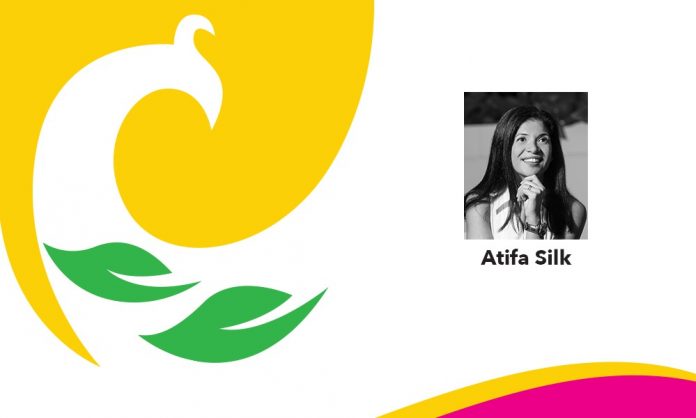
In the evolving times of publications losing traditional ad revenue, Atifa Silk pitches Campaign Asia as a brand that successfully integrated mediums. The Brand Director discusses the journey of the publication with our Editor and how has her role evolved alongside.
Synergyzer: As Brand Director, how have you built on the affluence of Campaign Asia?
Atifa Silk: I joined Haymarket Media Limited in 2000 as an Assistant Editor on Media magazine (the brand relaunched as Campaign Asia in 2010). It was something of a glorified title back then as we were a small team of three on editorial, and we all did a bit of everything. That had its advantages as it gave me the opportunity to be involved in broader aspects of the business such as conferences, roundtables and award shows that a journalist normally would not engage in. That experience made me realize that the scope of content is not restricted to a printed page.
So I continued on the editorial side going on to serve as Editor-in-Chief and ultimately, as the Editorial Director. At that point I decided to move to a more commercial and business-oriented role, which allowed me in taking Campaign Asia to the next stage of its evolution as Brand Director.
Synergyzer: Can you please elaborate on what you mean by the next stage?
Atifa Silk: We always knew that at some point it would not make sense for us to continue publishing a print magazine because print revenues were in decline as clients shifted their budgets to other areas. As we reached that tipping point, we strengthened our focus and resources towards digital, as well as events. For this, we modified our structure, ways of working and moved towards a known-audience strategy.
First, we created a registration-based model for CampaignAsia.com. By asking our digital audience to share some information about themselves we were able to help our editorial team gather data and deeper insights into the types of stories and content people were engaging with. These insights work to enhance the relevancy of our content, allowing our editors to understand what the reader is interested in, and what Campaign Asia content they engage with. The editors can use this data to make decisions on the issues that should be given greater coverage, ultimately ensuring the brand is delivering timely and relevant content that hits home with our readers.
Secondly, the skillset that we need as an organization and look for in our team members has also changed. Today, we need journalists who are not only good writers, but can also create video content and are able to produce and amplify content on social channels.
Thirdly, our editors work as part of a global newsroom. We have teams based in the UK, USA, Middle East, Turkey, as well as across Asia including Hong Kong, Singapore, Shanghai, Tokyo and India. So for instance, if a story breaks in Asia, but is also relevant for readers in the UK, the Asian team will share it on a shared CMS (Content Management System) allowing the UK team to post the story at the same time. This way we have created a 24-hour newsroom.
Synergyzer: How has the content strategy for Campaign Asia evolved over time?
Atifa Silk: Our focus is on delivering quality content, whether that’s in digital, print or a live event format. At the heart of what we do is produce great content that’s relevant and useful for our audiences, regardless of how and where they consume that content. Today, we start with the content or theme, and across all of our teams we consider how those ideas can be translated into live discussions, infographics, videos etc. We encourage our team to think from a multimedia perspective where the emphasis is on developing the content as opposed to any platform.
Synergyzer: Around the world, we see that it’s not easy to earn revenue for digital publications that were formerly in the print business.
Atifa Silk: We have created diverse revenue streams for Campaign Asia. We still have our print publication, but it is limited to two global editions a year. These are circulated in the months of June and September at Cannes Lions International Festival of Creativity and Spikes Asia Festival of Creativity, respectively. These international congresses allowed us to reach a global audience.
Secondly, we have set internal KPI’s (Key Performance Indicators), which all of our reporters contribute towards achieving. For instance, our journalists work towards improving set audience engagement targets every month. These metrics are tracked on digital dashboards that every team member has access to. As our content performance improves, so do our digital revenues. Bear in mind that the growth in revenue is not from traditional online advertising such as banner ads, but through content marketing. Our in-house Content Lab team is responsible for producing this, working closely with clients from across the region.
Our focus is also on events such as conferences and award shows that benchmark industry performance and celebrate the best work. The revenue for these is generated through sponsorship, as well as paid delegates. The purpose of our events is key and our editors get closely involved in the development of these programs.
Synergyzer: So the more content there is the more successful the publication?
Atifa Silk: I strongly believe that to be a successful publication, we do not need a large number of stories or writers on the team, rather the focus needs to be on the quality of content that we are producing. So instead of producing twenty stories a week, I would rather our team produces ten pieces, but they should be the type of features that our audience wants to engage with.
As originally published in Synergyzer Annual 2020.

